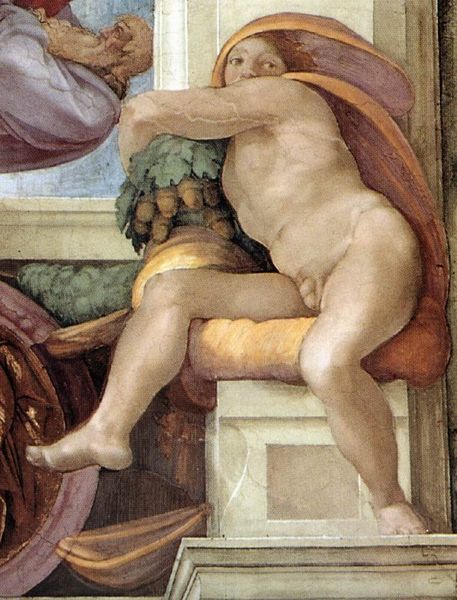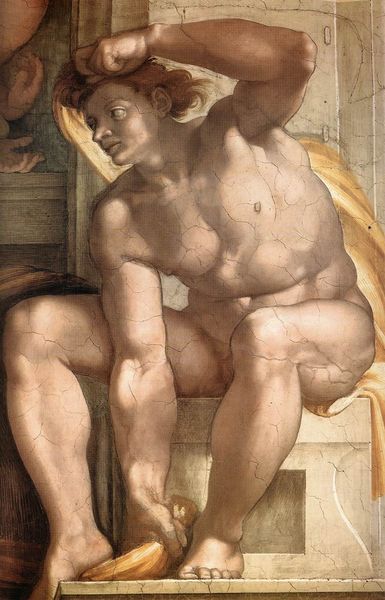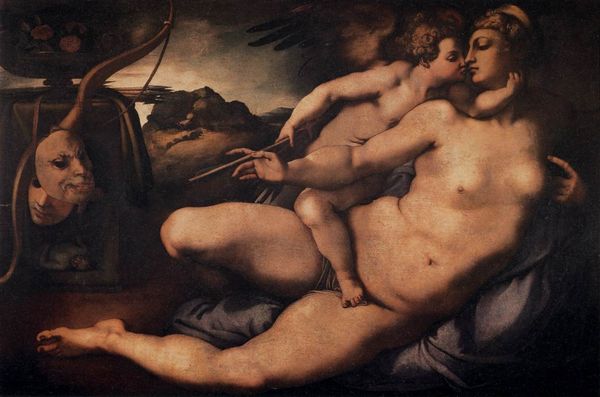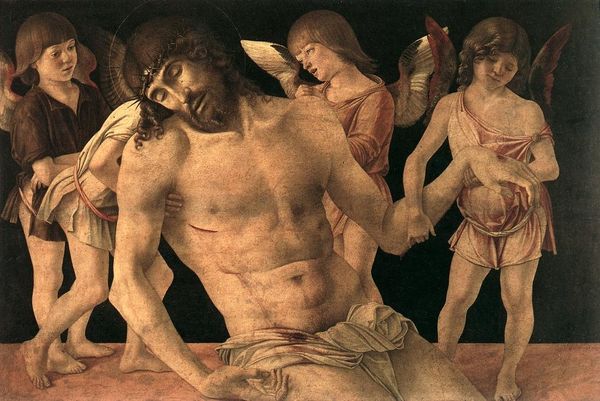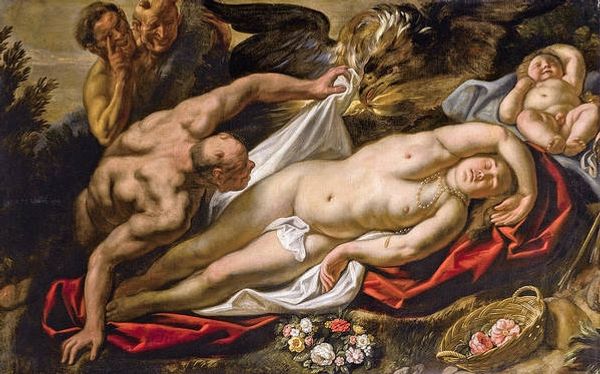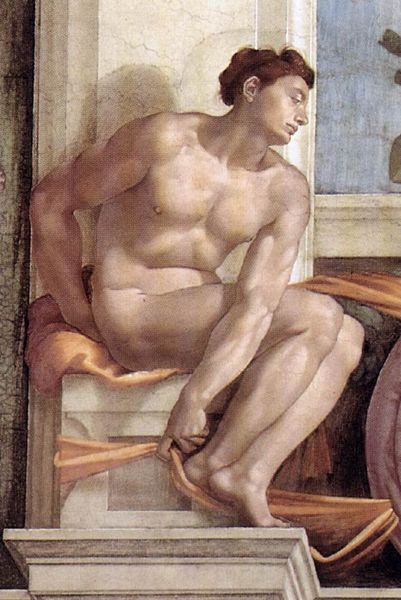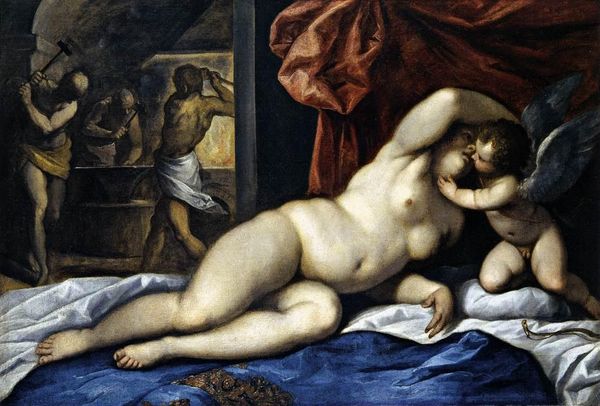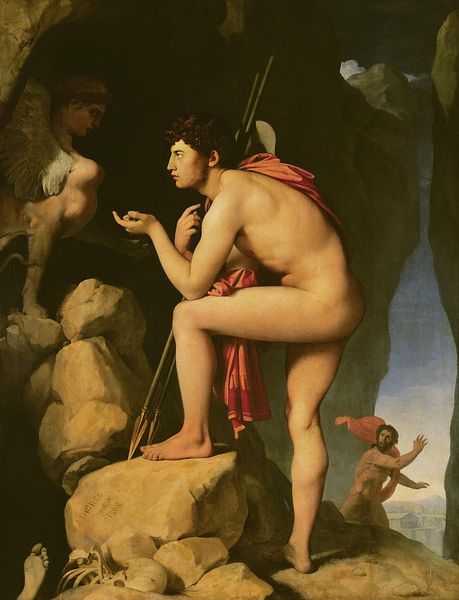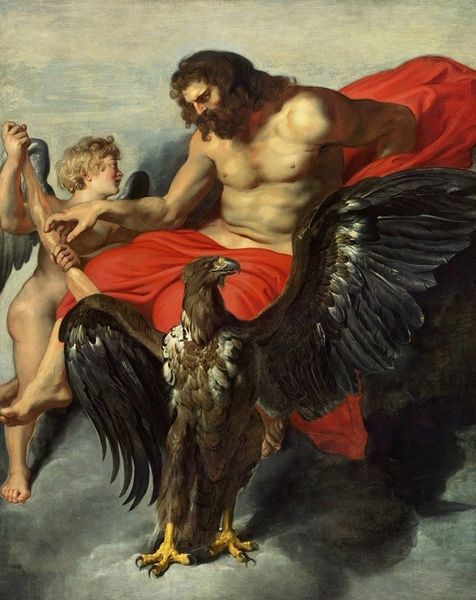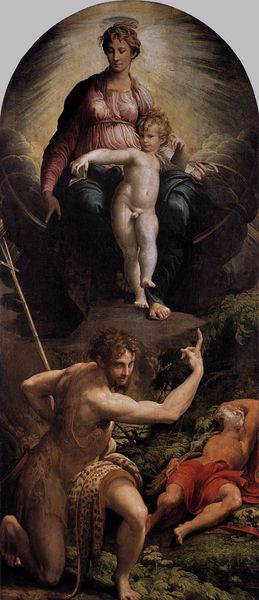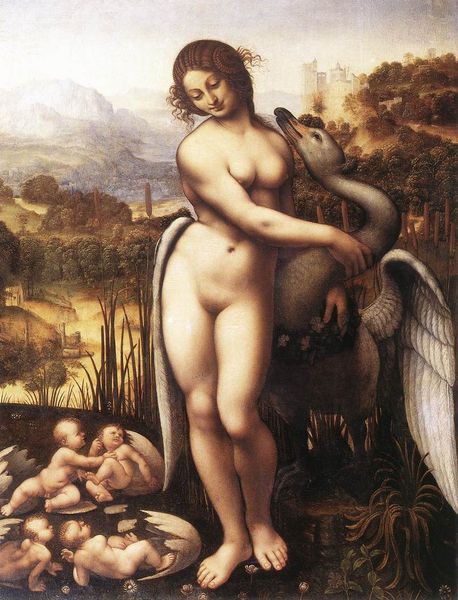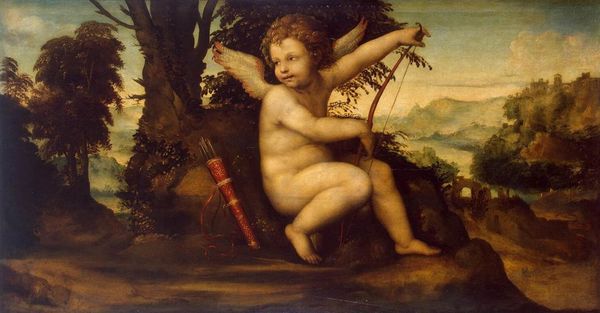
oil-paint
#
high-renaissance
#
allegory
#
oil-paint
#
fictional-character
#
figuration
#
oil painting
#
mythology
#
italian-renaissance
#
nude
Copyright: Public domain
This is a fresco detail of a putto painted by Raphael in the early 16th century, located in Rome's Villa Farnesina. The image teems with symbols of love and desire. Note the cherubic putto, aiming his bow with playful determination. This seemingly innocent figure carries the weight of centuries. Cupid, or Eros, can be traced back to ancient Greece, a symbol of primal, irrational desire. In contrast, during the Renaissance, he was reimagined, often depicted as a winged child, representing a more nuanced and playful aspect of love. Consider, for instance, how this motif resurfaces in Botticelli's "Birth of Venus," where cupids surround the goddess with similar erotic energy. The enduring appeal of Cupid lies in his ability to tap into our collective subconscious. The image of the winged child evokes a sense of innocence, yet he bears the weight of profound emotional power. This non-linear progression of this symbol has resurfaced, evolved, and taken on new meanings in different historical contexts, each time engaging us on a deep, subconscious level.
Comments
No comments
Be the first to comment and join the conversation on the ultimate creative platform.
